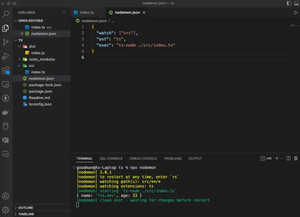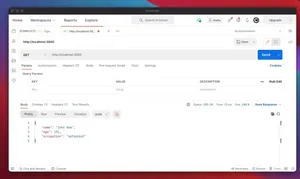Overview
NestJS combined with SQLite provides a powerful yet simple solution for creating robust, scalable server-side applications (you can use SQLite right away without any setup and configuration). This tutorial will walk you through a basic CRUD example using these technologies.
Setting Up the Environment
Before we begin, make sure you have Node.js installed. Then, install NestJS CLI globally on your machine using the following npm command:
npm i -g @nestjs/cliNow, create a new NestJS project:
nest new project-nameChange directory into your new project:
cd project-nameNext, let’s install the required SQLite package:
npm install sqlite3@latest @nestjs/typeorm typeormConfiguring the Database Module
After installing the dependencies, set up TypeORM with SQLite within your NestJS project. You will start by importing the TypeORM module into app.module.ts.
import { Module } from '@nestjs/common';
import { TypeOrmModule } from '@nestjs/typeorm';
@Module({
imports: [
TypeOrmModule.forRoot({
type: 'sqlite',
database: 'db.sqlite',
entities: [],
synchronize: true,
}),
],
})
export class AppModule {}
Creating the Entity
Now, create a new entity that represents the table structure in your SQLite database.
import { Entity, PrimaryGeneratedColumn, Column } from 'typeorm';
@Entity()
export class Item {
@PrimaryGeneratedColumn()
id: number;
@Column()
name: string;
@Column()
description: string;
}
Then, add this entity to your app.module.ts:
import { Item } from './item.entity';
@Module({
imports: [
TypeOrmModule.forRoot({
... // other options remain the same
entities: [Item],
}),
],
})
Creating a Service
To handle the business logic, create a service using NestJS CLI:
nest generate service itemsIn your items.service.ts, inject the repository and define CRUD operations.
import { Injectable } from '@nestjs/common';
import { InjectRepository } from '@nestjs/typeorm';
import { Repository } from 'typeorm';
import { Item } from './item.entity';
@Injectable()
export class ItemsService {
constructor(
@InjectRepository(Item)
private readonly itemRepository: Repository<Item>,
) {}
// Add methods for CRUD operations here
}
Defining the Controller
Create a controller to handle the incoming requests:
nest generate controller itemsAdd the CRUD operations in your items.controller.ts by using the service methods:
import { Controller, Get, Post, Body, Put, Param, Delete } from '@nestjs/common';
import { ItemsService } from './items.service';
import { Item } from './item.entity';
@Controller('items')
export class ItemsController {
constructor(private readonly itemsService: ItemsService) {}
// Add routes for CRUD operations here
}
Implementing CRUD Operations
Add the actual CRUD methods in the service and use them in the controller. For example, to create an item:
@Post()
async create(@Body() itemData: Item): Promise<Item> {
return this.itemsService.create(itemData);
}
The corresponding service method might look like this:
async create(itemData: Item): Promise<Item> {
const newItem = this.itemRepository.create(itemData);
await this.itemRepository.save(newItem);
return newItem;
}
Add similar methods for reading, updating, and deleting items.
You can now test your CRUD operations using a REST client, such as Postman, or by using curl commands in your terminal.
Conclusion
In this tutorial, you have learned how to build a basic CRUD application using NestJS and SQLite. With these foundational skills, you’re now equipped to expand upon and customize your application to suit your specific needs.

